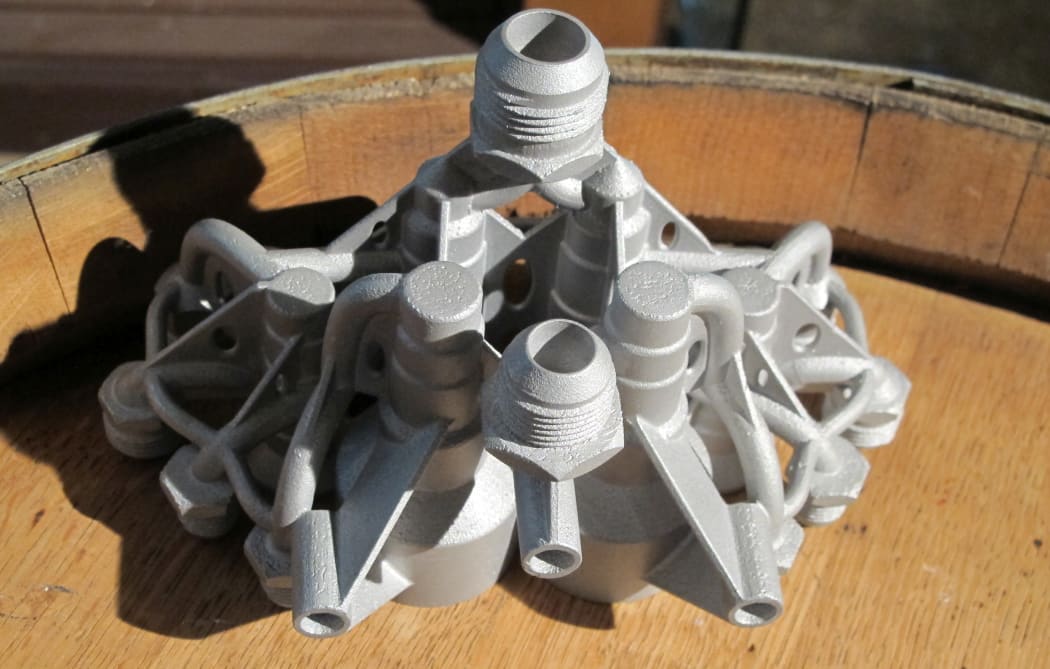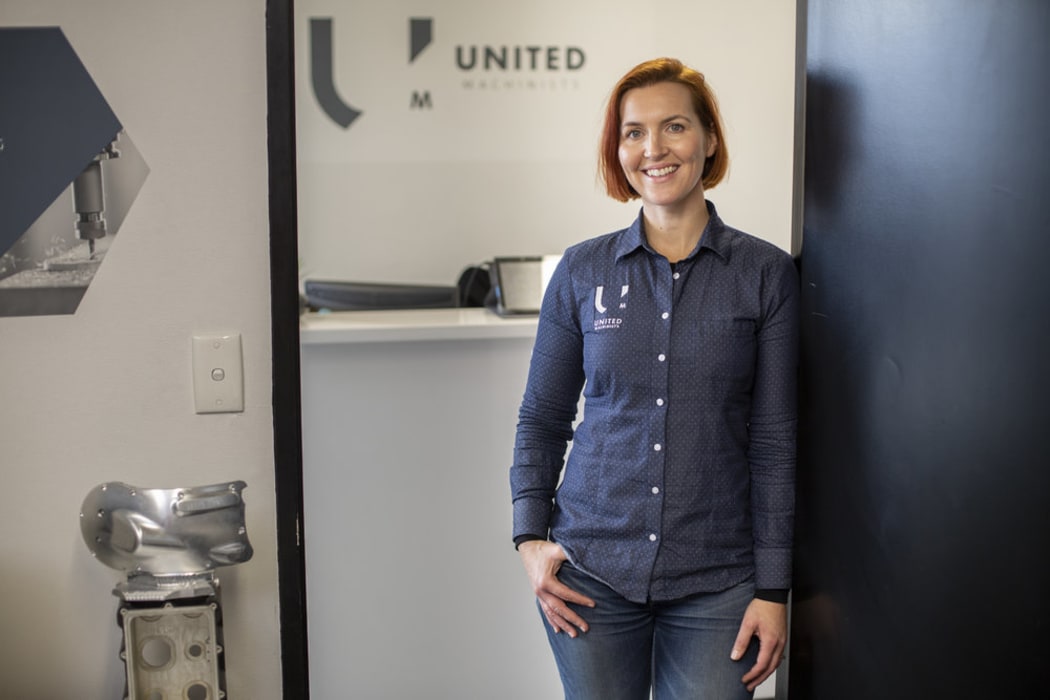New Zealanders are preparing for a winter of discontent as economic turmoil and social distancing, triggered by the coronavirus contagion, alter life as we know it.
The outlook is grim, with the banks expecting a knock to the economy in the order of 3 - 4 per cent of GDP this year. The tourism sector, which employs 10 per cent of the workforce is already on its knees and our national carrier Air New Zealand, may need a multi-billion dollar bail-out to survive.
But it literally isn’t all bad. Some of our companies are busier than ever with Covid-19 causing a surge in demand for their products. Others see the crisis as an opportunity to make our economy more resilient to future shocks by reducing our sometimes total reliance on the global supply chain for certain types of materials and products.
Subscribe to Two Cents' Worth for free on Apple Podcasts, Spotify, Stitcher, RadioPublic or wherever you listen to your podcasts

COVID-19 is actually creating a boom for some New Zealand companies. Photo: 123RF
Some of our companies, particularly in the medical and pharmaceuticals space, are experiencing a Covid-19 induced boom. Fisher & Paykel Healthcare has bucked the downward trend on the NZX, its share price is up around 20 per cent in the last 60 days.
Building immunity
That’s in part down to the weakening New Zealand dollar, which is boosting earnings from exports. But it is also down to strong demand for the company’s respirators, which are being used to treat those afflicted with Covid-19.
The same goes for drug maker AFT Pharmaceuticals, which makes cold medicines, antibiotics and dietary supplements. Sales of its vitamin supplements sachets, in particular, have gone through the roof.
“Normally in a year we might sell 1.2 million in New Zealand, we sold that quantity in three days flat,” AFT’s chief executive, Hartley Atkinson told RNZ.
“We are quite surprised at the spike we have seen in sales for some of the products.”
The same goes for NZX-listed Blis Technologies which makes probiotic for the mouth and throat.
Business is also buoyant for our largest company Fonterra, which has weathered a storm of its own with massive asset write-downs last year following years of ill-fated international expansion. Demand for our protein is strong in China, where public health agencies have urged citizens to drink milk to “build human resistance” and fight Covid-19.

Fonterra is experiencing an uptick in demand from China. Photo: Photo / AFP
The immediate upside for those companies is more than cancelled out by reduced export earnings and softening domestic demand in other parts of the economy.
But some industries that have suffered through the offshoring of production to lower-cost markets are also seeing increased demand as local producers look to secure their supply chains.
Christchurch-based apparel maker Cactus Outdoor is known for its high-quality outdoor wear and for making uniforms for our emergency services. But it recently teamed up with local company Lanaco to produce wool-based, health-grade dust masks, which it is now seeing strong overseas demand as millions of people don masks to lessen the risk of Covid-19 infection.
“We are having enquiries from all around the world for tens and hundreds of thousands of these masks, so we are actively looking at what it would take to ramp things up. We are ready and super keen to do that,” says Cactus CEO and founder Ben Kepes.

Cactus CEO and founder Ben Kepes Photo: Supplied
Reshoring potential
New Zealand’s largest apparel maker with 120 staff, mainly at its Christchurch workshop, Kepes sees the supply chain disruption that hit the world economy when China locked down several provinces to contain the spread of coronavirus, as an opportunity to revive our manufacturing sector, which he describes as being “on life support”
“We’ve sacrificed our resilience as a country in order to get some cheaper goods and maybe coronavirus will be the thing that stops us bowing down to the god of free trade in the way we’ve done historically,” says Kepes.
“Near-term there’s very much an opportunity for us to make more stuff. My real hope is that longer-term we really start thinking about where we source our goods from.”
To do so, we’ll have to embrace automation to allow us to better compete with high-value, low volume produces overseas. Our manufacturing productivity trails many other countries. Last year the Prime Minister’s Business Advisory Council issued its Future of Work report, which found that New Zealand is only at 68 per cent of the United States’ labour productivity.

Machine part created by 3D printing Photo: RNZ / Paul Bushnell
In the manufacturing sector it is even lower, at 54 per cent. The Council says that adopting automation technologies could close the gap, but the longer we put off that transition, the further behind we’re going to fall. Conversely, embracing automation to improve productivity could add $133 billion to GDP by 2030.
One high-value manufacturer embracing automation is Dunedin-based United Machinists. It makes mechanical components for a wide range of local companies, particularly in the marine and aerospace industries.
It’s chief executive, Sarah Ramsey, says United Machinists didn’t source many materials and equipment from China, so had seen little disruption to its own supply chain. But local companies that had faced disruption were now approaching United Machinists.
“If anything this whole Covid experience has demonstrated to everyone globally that people need to diversify their supply chain,” says Ramsey.

Sarah Ramsey, CEO and co-owner of United Machinists Photo: Copyright Graham Warman
“[We] have already had conversations with other New Zealand manufacturers who are looking at moving some of their production back to New Zealand.”
Embracing automation
United Machinists is in the midst of expanding its Dunedin production facility, with robotics and specialised machinery increasingly to be employed in the production process.
“The new machinery we are bringing in is focused on 24-7 lights out production. What we are actually seeing is an increase in 50 per cent in our capacity,” says Ramsey.
It will also involve re-skilling some of united Machinists’ 19 employees, with some machinists picking up programming and production management skills as tasks are taken up by machines.
The Business Advisory Council estimates that as many as 60,000 Kiwis will need to retrain each year through the current decade to adapt to the changing labour needs that come with greater automation.
But Ramsey says New Zealand’s high-value manufacturing sector is behind the rest of the world in embracing innovation and technology, a situation that will need to change if we are to see growing appetite to base more production here.
“What we’ve really lacked is government policy and a funding environment that supports production. What we’ve seen is a real under-investment in production technology.”
For Ben Kepes, the opportunity now is to put New Zealand manufacturing on a surer footing as an insurance policy against disruption in future crises.
“The fundamental thing for Treasury to think about is to balance the short term support with the longterm changes that will make us a more resilient economy,” he says.
“Arguably we were a lot more resilient in 1918 in the Spanish flu epidemic than we are now and we really need to think about that longer-term.”

